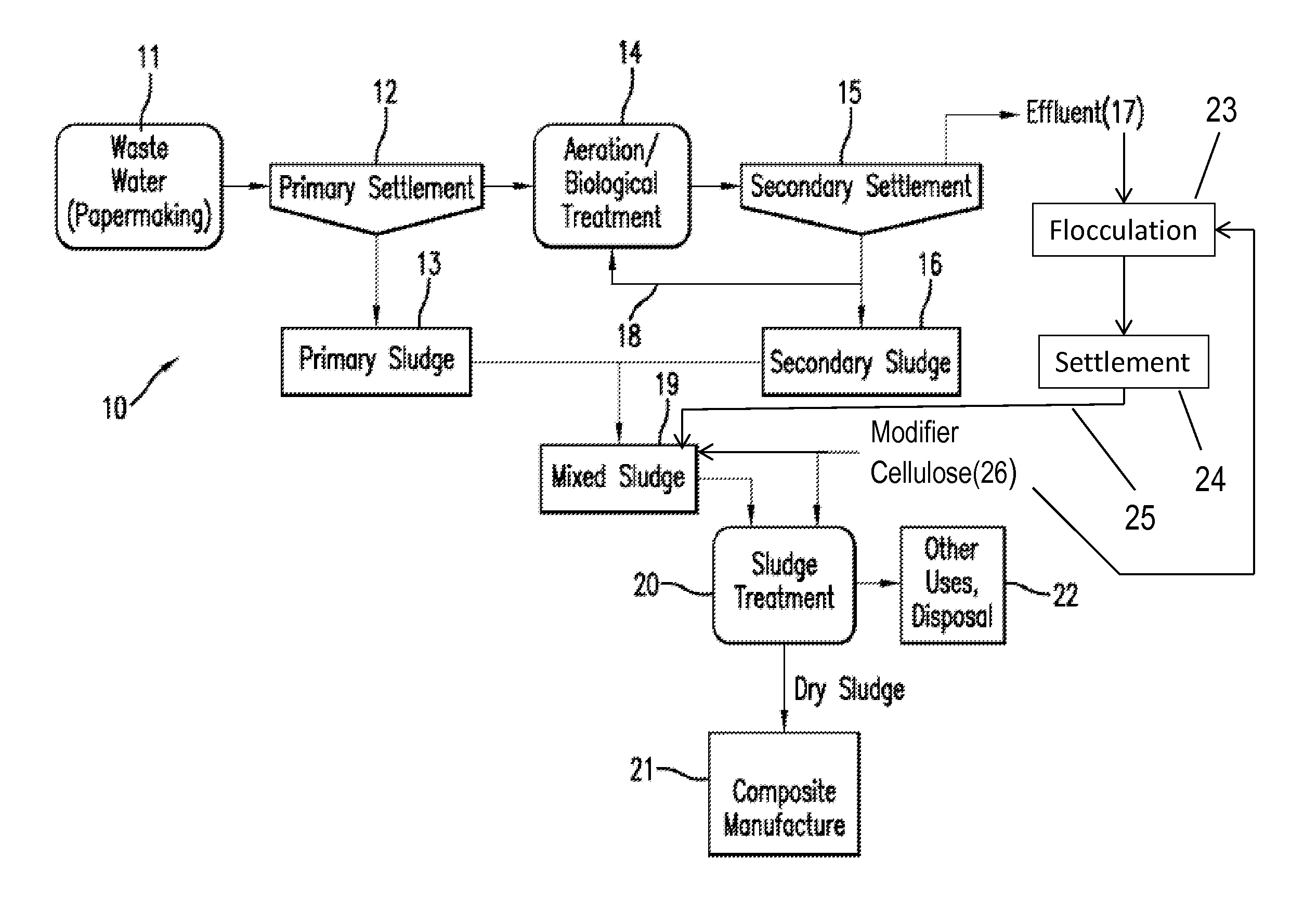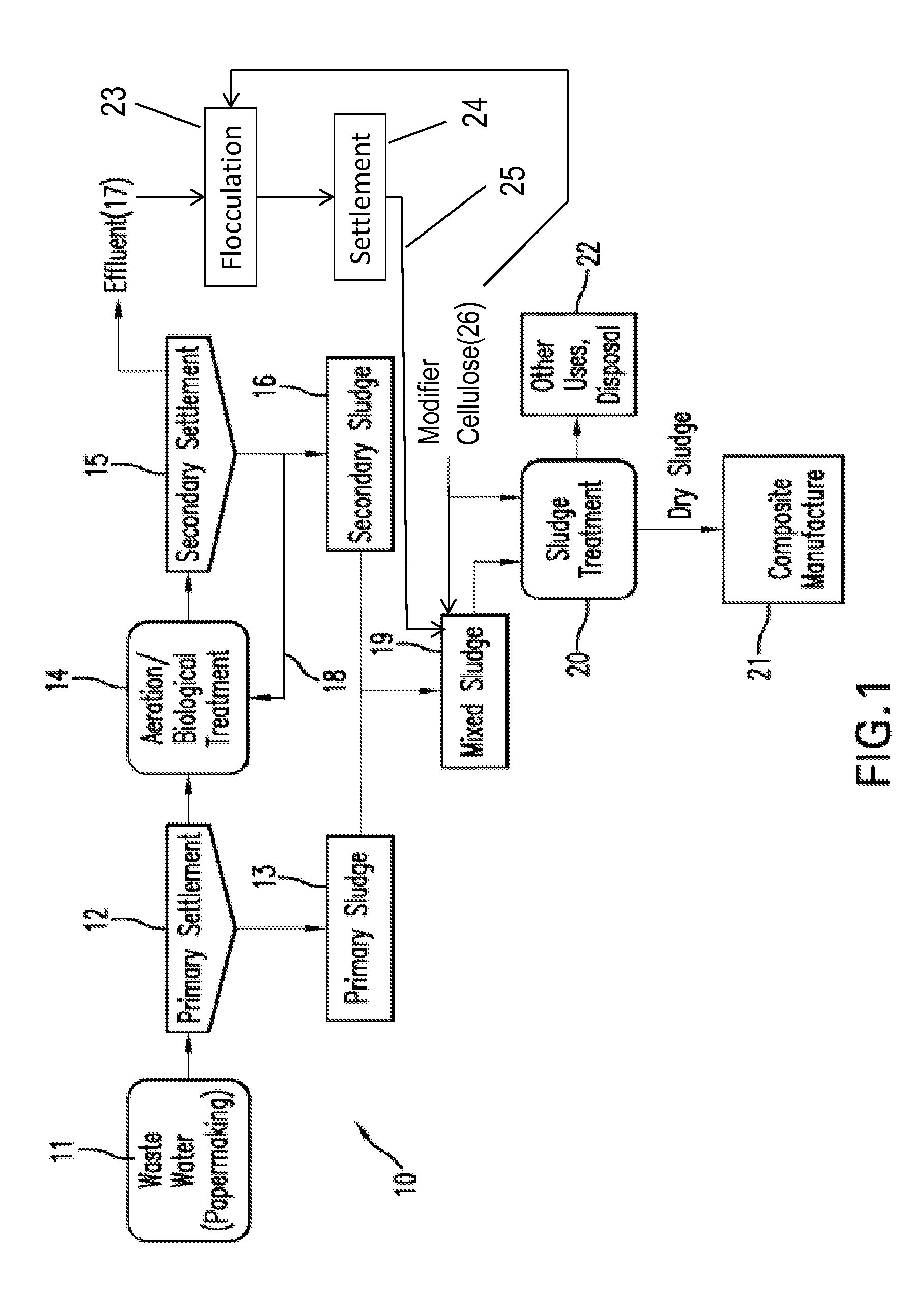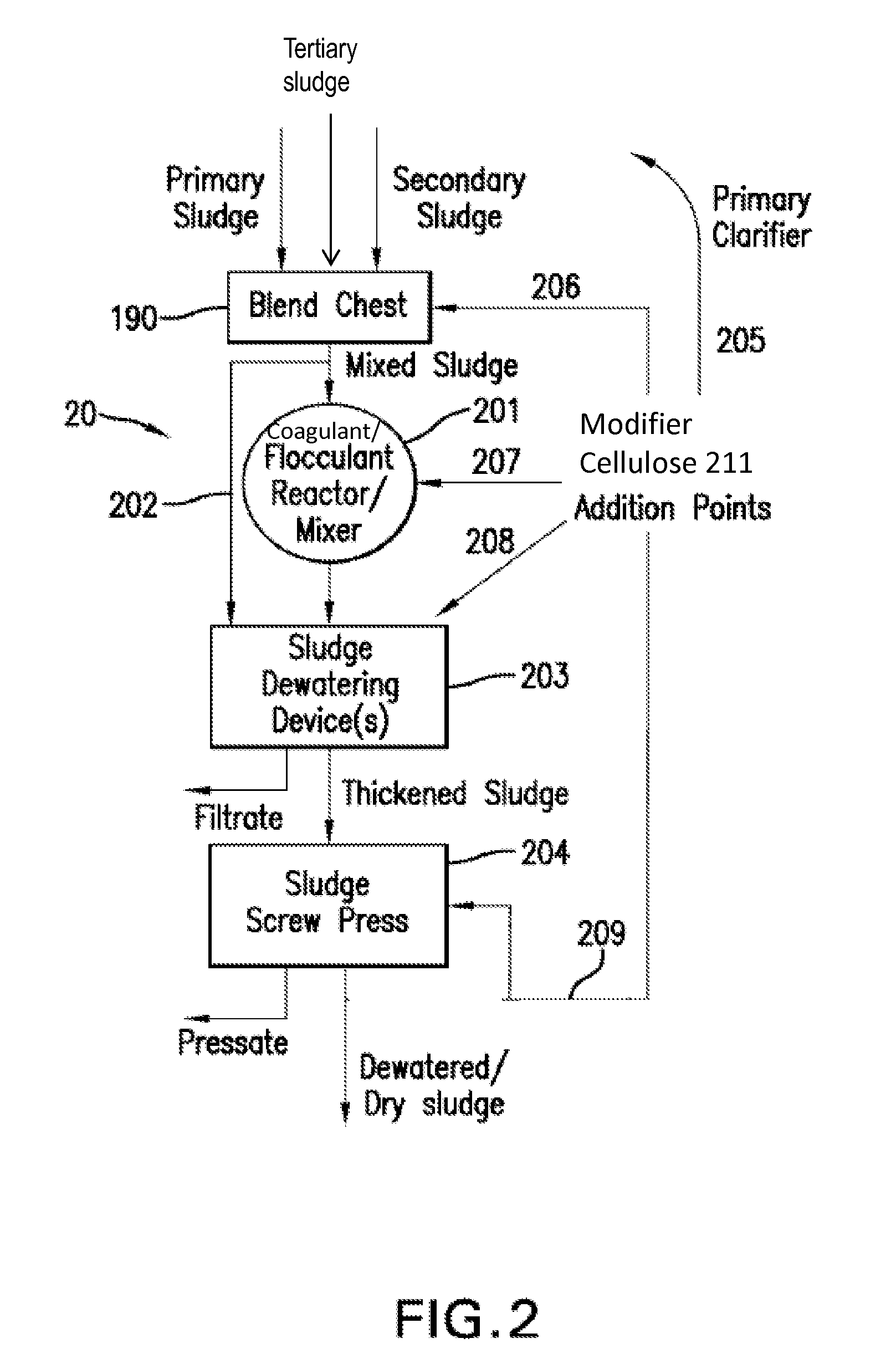Use Of Celluloses In Sludge Dewatering, And Sludge Products Thereof
a technology of cellulose and sludge, which is applied in the direction of lignin material coatings, inks, protein coatings, etc., can solve the problems of large paper mills producing many tons of sludge per day, inability to recover and reuse this water and papermaking raw materials, and large quantities of papermaking sludge as a by product. , to achieve the effect of improving the dewatering of sludg
- Summary
- Abstract
- Description
- Claims
- Application Information
AI Technical Summary
Benefits of technology
Problems solved by technology
Method used
Image
Examples
example 1
[0064]Dewatering treatment tests were performed to study the effects of modified cellulose on sludge with coagulant / flocculation treatments on free drainage and turbidity.
[0065]With respect to the materials used, the sludge was obtained from a commercial paper mill. As coagulants, BUBOND® 2620 and BUBOND® 5828 were used. As flocculant, BUFLOC® 5116 was used. The modified celluloses were microfibrillated cellulose (MFC), obtained from the University of Maine; microcrystalline cellulose (MCC), such as CEOLUS™ MCC, which was obtained from Asahi Kasei, Japan; and ultrafine cellulose (UFC), obtained as ARBOCELL® UFC-100 from JRS Inc., USA.
[0066]With respect to the method of the studies, a free drainage test was performed in a 1000 ml jar which was loaded with 500 ml of the sludge, and then (a) first, adding coagulant-mixing four times (changing from one jar to another similar jar), and (b) second, adding coagulant or flocculant and mixing ten times (changing from one jar to the other jar...
example 2
[0070]Dewatering treatment tests were performed to study the effects of ultrafine cellulose as modified cellulose on sludge with coagulant / flocculation treatments on free drainage and turbidity.
[0071]With respect to the materials used, the sludge was obtained from a commercial paper mill. As coagulant, BUBOND® 5828 was used. As flocculant, BUFLOC® 5116 was used. The modified cellulose used in these tests was ultrafine cellulose (UFC), obtained as ARBOCELL® UFC-100 from JRS Inc., USA.
[0072]With respect to the method of the studies, a free drainage test was performed in a 1000 ml jar which was loaded with 500 ml of the sludge, and (a) first, adding UFC-100, then coagulant BUBOND® 5828—mixing four times (changing from one jar to another similar jar), and (b) second, adding flocculant and mixing ten times (changing from one jar to the other jar). TTF volumes (ml) were measured at 60 seconds by weight (balance), and 10, 20, 30 second values were all estimated. The measurement of drained ...
PUM
| Property | Measurement | Unit |
|---|---|---|
| Weight | aaaaa | aaaaa |
| Fraction | aaaaa | aaaaa |
| Fraction | aaaaa | aaaaa |
Abstract
Description
Claims
Application Information
 Login to View More
Login to View More - R&D
- Intellectual Property
- Life Sciences
- Materials
- Tech Scout
- Unparalleled Data Quality
- Higher Quality Content
- 60% Fewer Hallucinations
Browse by: Latest US Patents, China's latest patents, Technical Efficacy Thesaurus, Application Domain, Technology Topic, Popular Technical Reports.
© 2025 PatSnap. All rights reserved.Legal|Privacy policy|Modern Slavery Act Transparency Statement|Sitemap|About US| Contact US: help@patsnap.com



